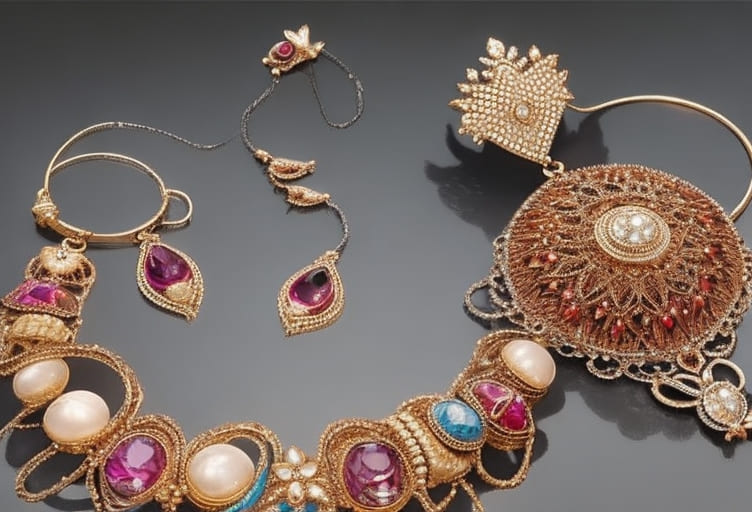Handmade jewelry techniques and design

Creating handmade jewelry is an art form that combines skill, creativity and passion. Each piece is a unique masterpiece, reflecting the craftsman's dexterity and artistic eye. In this article, we will explore the techniques and design involved in producing handmade jewelry, delving into the fascinating world of artisanal goldsmithing.
The Techniques Behind Handmade Jewelry
Mastering the craft
Creating handmade jewelry requires an intricate skill set and a deep understanding of the materials used. Let's look at some of the fundamental techniques involved:
1. Goldsmithing: The Art of Metal Manipulation
Goldsmithing is the heart of jewelry production. Goldsmiths work with precious metals, such as gold, silver and platinum, using techniques such as casting, forging, welding and texturing to shape the pieces. The ability to master these techniques is essential to creating durable and aesthetically appealing jewelry.
2. Gem Cutting: Transforming Rough Stones into Brilliant
Gemstones are the highlight of many jewelry pieces, and cutting is the art of shaping and polishing rough gemstones to enhance their beauty. Each gemstone requires a specific cut to reveal its maximum shine and color potential. Experienced cutters know how to choose the best cutting angle to highlight the unique characteristics of each stone.
3. Glazing: Adding Color and Intricate Details
Enameling is a technique that involves applying colored enamel to metal and then melting it at high temperatures. This creates colorful, intricate details in jewelry, allowing artisans to incorporate unique design elements.
The Design of Handmade Jewelry
From idea to creation
In addition to specific techniques, design is a fundamental part of creating handmade jewelry. Here are some important aspects of jewelry design:
1. Drawing inspiration from Nature and Culture
Many jewelry designers find inspiration in nature, incorporating elements like flowers, leaves, and organic shapes into their pieces. Additionally, cultural influences can play an important role in design, resulting in jewelry that tells stories and carries deep meanings.
2. Balance and Proportion
Balance and proportion are essential to jewelry design. Designers must consider how the different elements of the piece relate to each other and how the jewelry fits the wearer's body. The skillful use of stones, metals and decorative details creates a visual harmony that is appealing to the eye.
3. Personalization and Unique Pieces
One of the advantages of handmade jewelry is the ability to personalize it. Artists can create bespoke pieces for customers, incorporating their preferences and personal history into the jewelry. This results in unique and meaningful pieces that are truly special.
The Future of Artisan Jewelry
Celebrating individuality
Artisanal goldsmithing continues to thrive in a world dominated by mass production. As consumers seek unique and meaningful products, demand for handcrafted jewelry remains strong. The future of artisanal goldsmithing is full of opportunities for talented designers and skilled goldsmiths who want to continue creating exceptional pieces.
Handmade Jewelry – Expressions of Art and Elegance
Creating handmade jewelry is a perfect marriage of art and technical skill. Each piece is a unique expression of creativity and passion, destined to delight and inspire those who wear it. By mastering techniques and embracing innovative design, artisan goldsmiths continue to shape the future of goldsmithing, providing jewelry lovers the opportunity to own truly special and meaningful pieces.